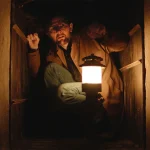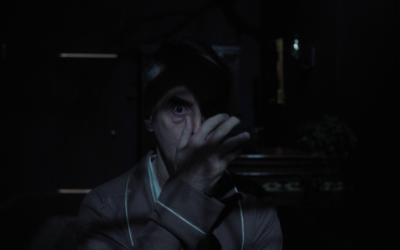The world of animated series has undergone considerable transformations since its beginning. From simplistic hand-drawn frames to contemporary 3D animation, the journey of animation is fascinating and deeply intertwined with technological advancements, audience preferences, and cultural shifts.
As we explore the evolution of animated series, we recognize how these shows have shaped entertainment and influenced generations. Here, we will touch on various milestones in animated storytelling and their impact on viewers for a comprehensive look at this beloved medium.
Early Beginnings
The roots of animated series can be traced back to the early 20th century with silent short films.
These pioneering pieces, like Winsor McCay’s “Gertie the Dinosaur,” showcased simple yet captivating animation techniques. McCay’s groundbreaking work laid the groundwork for future animation styles. The advent of sound in the late 1920s revolutionized the industry, with Walt Disney’s “Steamboat Willie” introducing synchronized sound to animation. To know more about the history of animation and cartoons, look into online resources that dive into the whole history from these early beginnings. Thanks to technological advancements, the intimate relationship between animators and their characters encouraged a sense of attachment among viewers, starting the tradition of beloved animated figures that we cherish today.
Golden Age of Animation
The era known as the Golden Age of Animation spurred a boom in creativity from the 1930s to the 1960s. With studios like Disney and Warner Bros. leading the charge, the iconic Mickey Mouse, Bugs Bunny, and Donald Duck captured audiences’ hearts. The introduction of full-length animated films like Disney’s “Snow White and the Seven Dwarfs” in 1937 showcased unprecedented storytelling capabilities in animation. These productions shifted the focus from slapstick humor to more expansive narratives that appealed to both children and adults.
The artistry represented in these films reflected cultural contexts, exploring themes of love, courage, and resilience. This period saw the rise of television in the 1950s, broadening the audience for animated series. With shows like “The Flintstones” and “The Jetsons,” proponents successfully merged animation with sitcom elements and created shows that resonated with families across multiple generations.
The Influence of Satire
By the late 1960s and 1970s, the focus of animated series began changing dramatically. The emergence of “The Simpsons” in 1989 marked a definitive pivot towards satirical humor. This series dissected contemporary society, politics, and familial dynamics, harnessing animation as a medium for sharp social commentary. The humor was nuanced, employing wit that resonated with an older demographic and still appealed to younger viewers. “South Park” further pushed boundaries by addressing taboo topics and less conventional humor.
The transition to more mature themes indicated a willingness from networks to explore complex narratives that challenged societal norms. This tone catalyzed a wave of new animated programming that continued the trend of merging humor with deeper thematic exploration, setting the stage for future creators.
The Rise of Digital Animation
The introduction of digital animation in the late 1990s revolutionized the production process. Software advancements streamlined animation, allowing for more intricate designs and faster turnaround times. “Toy Story” in 1995 marked a turning point, demonstrating how digital techniques have improved visual storytelling. The animated feature set new benchmarks, introducing the vast possibilities of 3D modeling and animation.
The line between traditional animation and digital methods blurred. Television series like “Avatar: The Last Airbender” combined East Asian aesthetic influences with Western storytelling, illustrated the capability of digital animation to capture audiences’ imaginations. It did not take long for networks to recognize the commercial potential of animated series, and they began investing heavily in high-quality productions. Animation reached a broader audience and attracted new fans.
Diverse Offerings and Representation
Today, there is a greater emphasis on diversity and representation. Shows began to incorporate varied cultural perspectives and narratives that resonated with a global audience. “The Boondocks” and “Big Mouth” tackled pressing social issues and explored different facets of identity. These series garnered attention for their bold storylines and willingness to represent marginalized voices in nuanced ways.
In conjunction with this diversity, genre experimentation flourished. Networks began producing animated series that combined traditional formats with elements from other genres, including horror, drama, and even reality television. Creators can take imaginative risks, resulting in groundbreaking series like “Rick and Morty,” which blended dark humor with science fiction tropes.
The Impact of Streaming Services
The proliferation of streaming services has reshaped how animated series are produced and watched. Netflix, Hulu, and Disney+ have become major players, offering animated content that caters to diverse audiences. The instant accessibility of these platforms allows series to reach viewers who may have previously been excluded due to traditional cable constraints. Original animated content tests the waters with bold storytelling and unique artistry.
Streaming services incentivize creators with greater creative freedom for niche projects that may not thrive on conventional networks. This trend has made room for stories that wouldn’t find a home on traditional platforms, widening the scope of what animated series can explore. The outcomes reflect a shift in how animation is perceived. Once considered only for children, animation now encompasses multifaceted narratives appealing to adult audiences across various demographics.
The Future of Animation
The increasing incorporation of virtual and augmented reality within animated experiences presents new opportunities for immersive storytelling. Audiences expect interactive components that engage them with the narrative and characters, creating a more participatory culture in animation. Sustainability in animation production is becoming a focal point, with creators seeking environmentally friendly methods.
Changes in technology can influence the narrative styles and thematic elements in the animation field. The growth of artificial intelligence might direct future creativity and innovation, challenging traditional notions of authorship and originality. There’s potential for further representation in animated series, with the need for authenticity remaining critical as creators address issues of inclusion. Raising the voices of diverse creators at the forefront can improve storytelling in the years to come.
Image source: https://unsplash.com/photos/Mt-Jw7iA_P0
The animated series phenomenon has experienced extraordinary shifts, from its rudimentary beginnings to its prominent place in contemporary entertainment. Each stage of evolution has contributed nuances that shape how we perceive and engage with animated storytelling, providing us with meaningful characters and relatable narratives. Animation continues to adapt and transform, and fans can anticipate even greater boundaries to be pushed and stories to be told.














